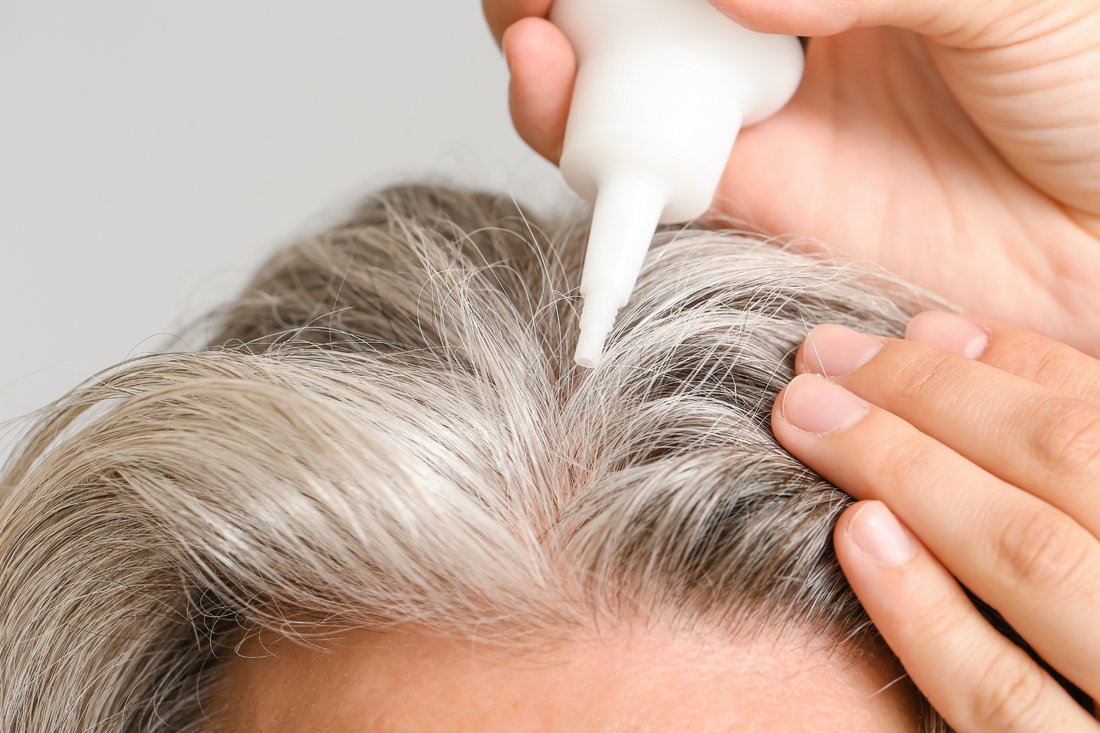Worried about hair loss or hair thinning? From searching causes on the internet to talking to your dermatologist, health care provider, or trichologist about solutions, you’ve probably come across the ingredients Minoxidil and Finasteride.
And if you’re still searching, you most likely still have questions. Don’t worry—we’re here to help. With so many options on how to go about solving your hair loss concerns, it can be overwhelming. Let’s try to really understand how effective current products- specifically, Minoxidil and Finasteride- are for supporting thicker, fuller looking hair.
Minoxidil: The Timeline
Minoxidil was originally discovered in the 1950’s to treat high blood pressure. It was officially approved as a drug for hypertension by the Food and Drug Administration (FDA) in 1979. After conducting a few studies, they began to notice an unexpected side effect of taking the product was an increase in hair growth. After a few more studies and some adjustments of the formulation, a new version of Minoxidil was FDA approved in 1988 as a product for treating male pattern baldness. Later in 1992, the product was made available for women. Since then, most development relating to Minoxidil has been in different marketing efforts.
Minoxidil Today
The finalized version of Minoxidil is also known as Rogaine. It’s a medication used to treat pattern hair loss in males and females. Why is this important to note? Pattern hair loss is genetic—if you suffer from any other type of hair loss, it’s likely that Minoxidil won’t be as effective for you.
How it Works
Minoxidil is typically available over the counter either in 2% or 5% concentrations. Basically, either 2% or 5% of the product is Minoxidil. Your doctor will typically prescribe one given the severity of hair loss as well as any other medical issues. There are a handful of brands that offer this over-the-counter treatment in both topical liquid or foam. You apply it on your scalp, typically twice a day.
Successful Minoxidil users will see results with consistent use over the course of 4+ months. Some claim that “in approximately 60-70 percent of patients, hair density will generally begin to stabilize two to three months into treatment, with fewer and fewer hairs being lost each day.”
It’s also important to remember that Minoxidil is not a cure-all for hair loss. Users must continuously apply the product if they would like to continuously prevent hair loss. If you stop taking Minoxidil, your hair will return to its original state.
To this day, no one has been able to identify what causes Minoxidil to work. Most believe Minoxidil helps with stimulation of hair follicles, causing cells in the telogen (resting) phase to enter into the angen (growth) phase. By helping shift hair follicle behavior from resting to growing, Minoxidil has the potential to help re-stimulate hair growth on a person’s head.

Keeping in Mind the Side Effects
Despite the promising benefits of Minoxidil, there is the potential to experience a handful of side effects when taking the product. Some side effects include minor burning, stinging, and redness at the site of application, but can be as severe as “unwanted facial/body hair, dizziness, fast/irregular heartbeat, fainting, chest pain, swelling of hands/feet, unusual weight gain, tiredness, and perhaps even difficulty of breathing.” The biggest challenge for most people is waiting 4+ months to see if the medication is working.
Discover a Targeted Solution for Thinning Hair
While Minoxidil has been a leader in the hair growth industry for some time, it’s not a universal solution. At Revela, we dedicate our time and use of technology to help find and optimize new ingredient(s) to help with growing hair – something we dare say that no other company is currently doing. We recommend that you try the Revela Hair Revival Serum, which harnesses the power of new, targeted ingredients to support hair follicle health and helps to reduce the appearance of thinning hair.





